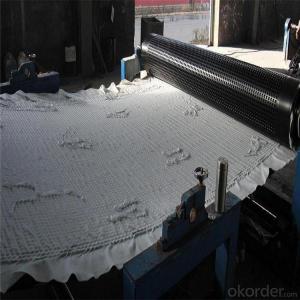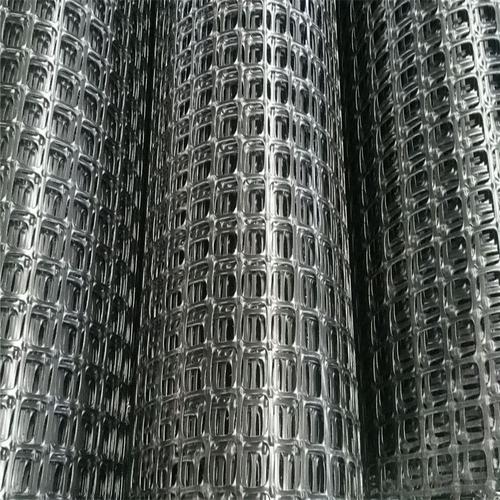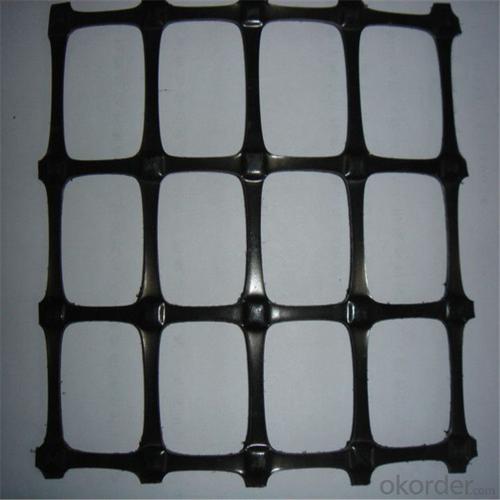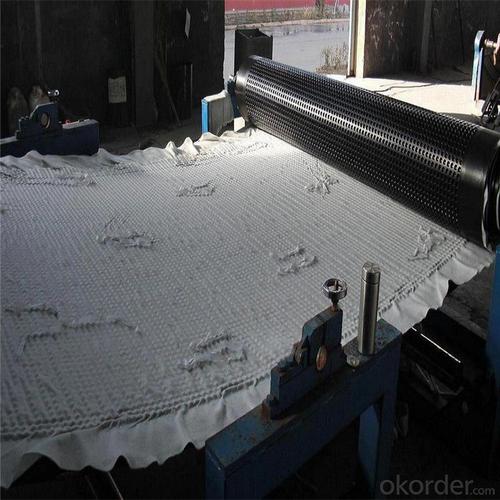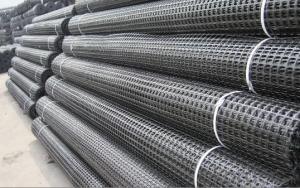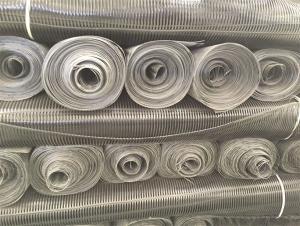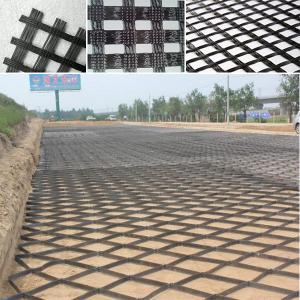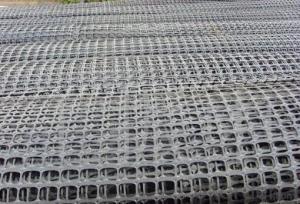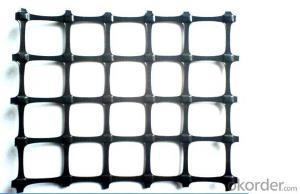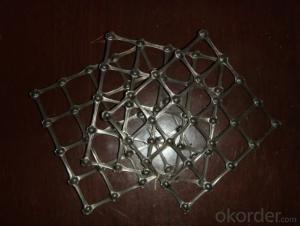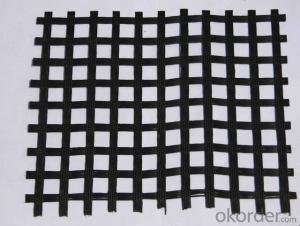PP Biaxial Geogrid with High Tensile Strength Manufacturer
- Loading Port:
- Qingdao
- Payment Terms:
- TT OR LC
- Min Order Qty:
- 10000 g/m²
- Supply Capability:
- 100000 g/m²/month
OKorder Service Pledge
OKorder Financial Service
You Might Also Like
Product Specification---PP Biaxial Geogrid
Introduction:
Biaxial geogrid, made of high molecular polymer, is extruded into sheet and then punched into regular mesh pattern, and finally stretched in longitudinal and transverse directions.
Features:
1. With high tensile strength in longitudinal and transverse directions
2.This structure can provide an chain system of more effective force bearing and spreading for the soil.
Application:
Mainly applied in highway, railway, slope protecting projects etc.
1)strengthen land loading capacity and extend its service life.
2) convenient to construct ;
reducing project cost and maintenance cost.
Properties of PP Biaxial Geogrid (Test Method: ASTM D 6637)
Specification | EGA30-30 | EGA50-50 | EGA80-80 | EGA100-100 | EGA120-120 | |
Mesh size(mm) | 25.4×25.4 Or 12.5×12.5 | |||||
Breaking strength ≥(KN/m) | Warp direction | 30 | 50 | 80 | 100 | 120 |
Across warp | 30 | 50 | 80 | 100 | 120 | |
Elongation at break ≤(%) | Warp direction | 3 | ||||
Across warp | 3 | |||||
Elasticity modulus(GPA) | 67 | |||||
Thermal tolerance | -100~280℃ | |||||
Width | 1~6m | |||||
Item Spec | TGSG 15-15 | TGSG 20-20 | TGSG 25-25 | TGSG 30-30 | TGSG 35-35 | TGSG 40-40 | TGSG 45-45 | TGSG 50-50 | ||
Tensile Strength ≧(Kn/m) | MD | 15 | 20 | 25 | 30 | 35 | 40 | 45 | 50 | |
TD | 15 | 20 | 25 | 30 | 35 | 40 | 45 | 50 | ||
Nominal Elongation ≦(%) | MD | 15 | ||||||||
TD | 13 | |||||||||
Tensile Strength at 2% Strain ≧(Kn/m) | MD | 5 | 7 | 9 | 10.5 | 12 | 14 | 16 | 17.5 | |
TD | 5 | 7 | 9 | 10.5 | 12 | 14 | 16 | 17.5 | ||
Tensile Strength at 5% Strain ≧(Kn/m) | MD | 7 | 14 | 17 | 21 | 24 | 28 | 32 | 35 | |
TD | 7 | 14 | 17 | 21 | 24 | 28 | 32 | 35 | ||
Junction Efficiency (%) | 93 | |||||||||
Width ≦(m) | 6 | |||||||||
Note: MD: Machine direction
TD: Transverse direction
Images of PP Biaxial Geogrid
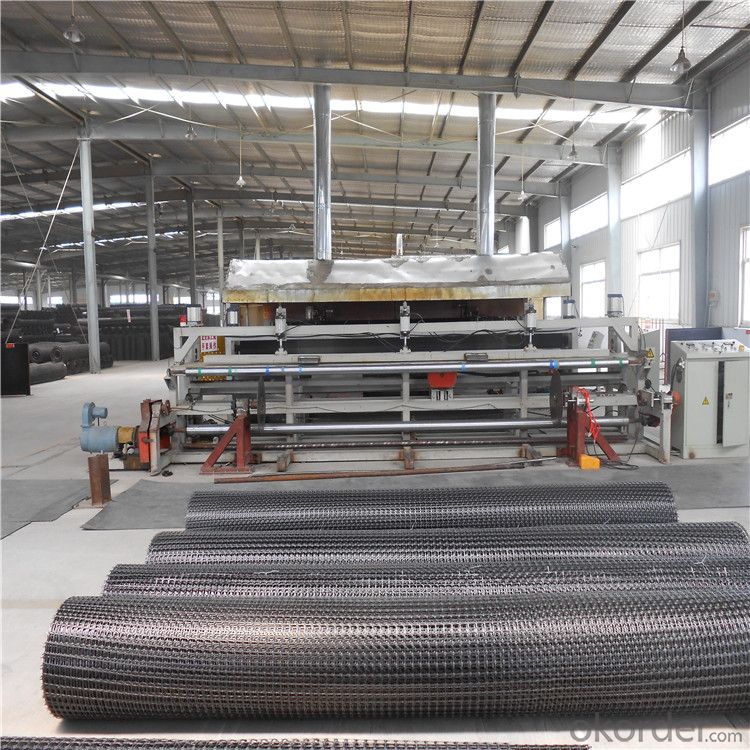

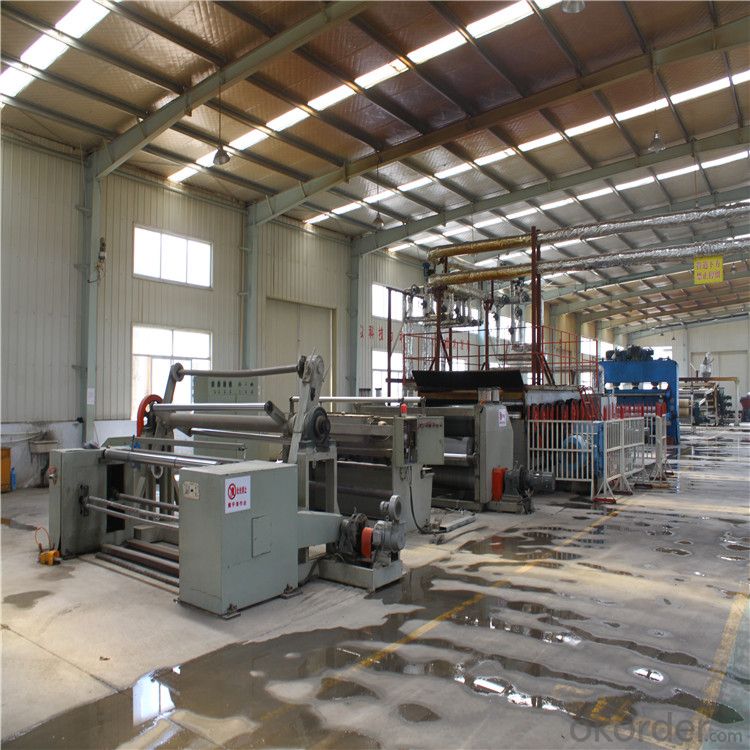

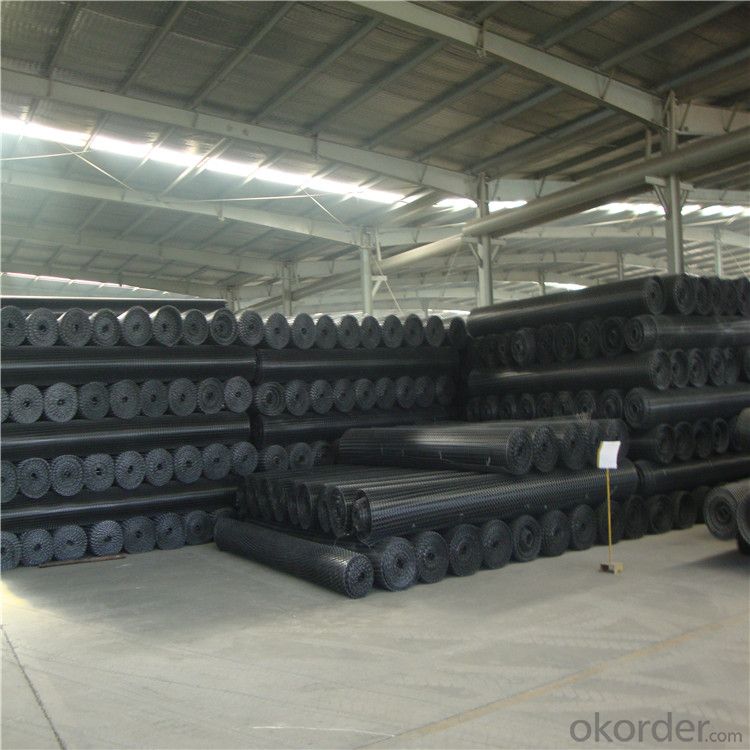

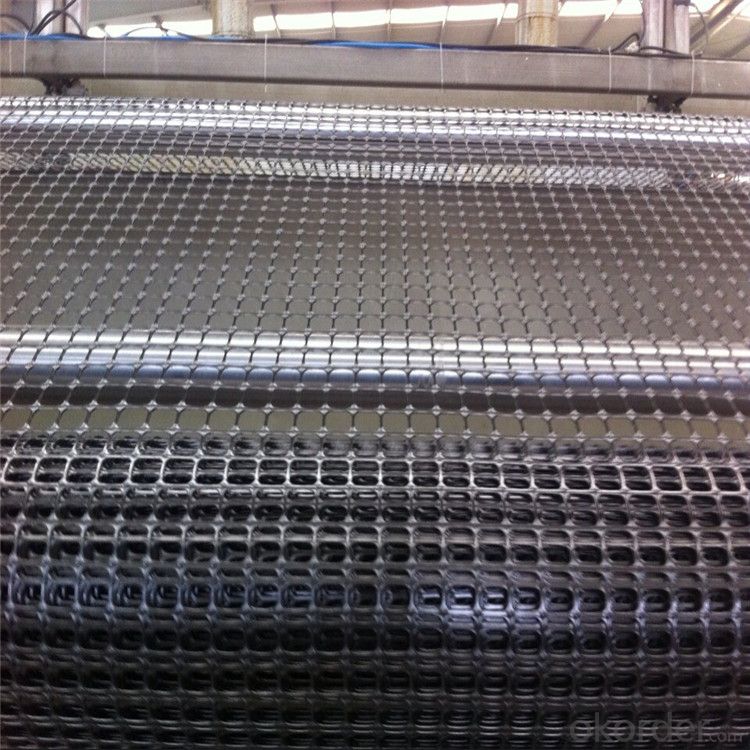
- Q: Geogrid TX160 what does that mean?
- It has a high degree of three-dimensional mesh screen, which is used in civil engineering to increase the bearing capacity of the foundation and improve the crack resistance of the pavement.
- Q: Are geogrids effective in preventing soil creep?
- Yes, geogrids are effective in preventing soil creep. Geogrids provide additional reinforcement to the soil, increasing its stability and resistance to movement. They help distribute the forces acting on the soil, reducing the potential for creep and maintaining slope integrity.
- Q: Performance parameters of steel plastic geogrid
- After 100 freeze-thaw cycles per meter elongation% mesh net from mm antifireeze Index C viscosity, peel strength of N solder joint ultimate longitudinal and transverse longitudinal and transverse longitudinal and transverse longitudinal and transverse longitudinal and transverse
- Q: Dimensions of U shaped steel nails for geogrids
- The overlap length of geogrid shall not be less than 30CM
- Q: How do geogrids improve the stability of railway embankments?
- Geogrids improve the stability of railway embankments by providing reinforcement and increasing the load-bearing capacity of the soil. They are designed to distribute the applied loads more evenly, reducing the potential for settlement and soil movement. Additionally, geogrids increase the shear strength of the soil, preventing slope failure and erosion.
- Q: Can geogrids be used in temporary construction platforms?
- Yes, geogrids can be used in temporary construction platforms. Geogrids provide structural reinforcement and stabilization to the soil, making them suitable for supporting heavy loads and providing a stable working surface during temporary construction projects.
- Q: Can geogrids be used in stormwater management applications?
- Yes, geogrids can be used in stormwater management applications. Geogrids are commonly used to reinforce and stabilize soil in various construction projects, including stormwater management systems. They can be used to enhance the strength and stability of retaining walls, embankments, and slopes, which are essential components of stormwater management systems. Additionally, geogrids can help reduce soil erosion and improve drainage, making them a valuable tool in stormwater management.
- Q: What are the different testing methods for geogrids?
- There are several testing methods for geogrids, including tensile strength testing, creep testing, puncture testing, and pullout testing. These methods are used to evaluate the performance, durability, and suitability of geogrids for various applications in civil engineering and geotechnical projects.
- Q: Geogrid tgsg50-50 what does it mean
- It is a kind of geogrid with biaxial stretching square mesh. 45-45 is tensile strength
- Q: How do geogrids improve the load distribution in pavements?
- Geogrids improve load distribution in pavements by providing a reinforcement layer that enhances the structural integrity of the pavement system. They distribute the load more evenly across the pavement surface, reducing stress and preventing the formation of cracks and deformations. Geogrids also enhance the overall strength and stability of the pavement, improving its lifespan and reducing maintenance costs.
Send your message to us
PP Biaxial Geogrid with High Tensile Strength Manufacturer
- Loading Port:
- Qingdao
- Payment Terms:
- TT OR LC
- Min Order Qty:
- 10000 g/m²
- Supply Capability:
- 100000 g/m²/month
OKorder Service Pledge
OKorder Financial Service
Similar products
Hot products
Hot Searches
Related keywords





